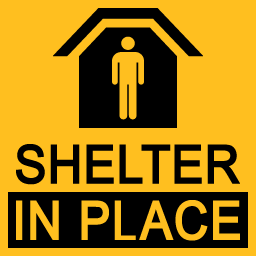Find where to get help after a disaster –
before they strike.
Disasters strike at inopportune moments
No time is a good time for a disaster. We can’t prepare for all that life throws at us. But we can have a plan in place of where and when to go should a disaster touch down and we need to call on the services of an emergency shelter.
Federal emergency shelters are life-saving refuges in tense times. However not all disasters will warrant an emergency shelter. In fact, there are some critical first steps to walk through before the decision to pursue a shelter, so keep reading. Even if you never need a federal shelter, it’s still good to know where they are.
Let’s face it – we’ve all got 5 minutes to spare for something as important as this.
To get started finding your local shelters follow the three P’s – Pinpoint, Print, and Post.

Pinpoint.
Knowing where your nearest emergency shelters are is the first step. Enter your zip code to discover all the registered emergency shelters in your area. Using the cursor move the map around until it best references your location.

Print.
After locating a few emergency shelters within a reasonable distance of your home, click the Print button to make physical and digital copies. Do the same for other important locations. Draw and label each to make them your own.

Post ‘em!
And now for the fun part. Add to the refrigerator at home or store somewhere easily accessible. If you’ve got kids let them post it so they know where it is. Keep a digital copy too and share with your community.
Pinpoint your location below, here we go…
What to Expect at an Emergency Shelter
Making the decision to seek an emergency shelter in stressful times like a disaster can be difficult. Nobody elects to use these services. We’re forced, so it is helpful to know what awaits in most circumstances.
Most provide the following:
Additional services may include:
When Should I Go to a Shelter?
Once a disaster occurs, check to see if the shelters near your home are open before venturing out. Use the “Find an Open Shelter” from the Red Cross, along with a host of other resources to help guide you though the situation. Next, gauge the situation to determine whether sheltering in-place or at-home is a safer option. Not all disasters will warrant the need to leave where you are.
If an emergency has forced you to evacuate your home, the Red Cross may be able to help.
When an open shelter is not available:

Sheltering in Place
The ideal place to ride a disaster out is at home. But what happens if a massive earthquake should occur at 10:30 on a Tuesday, and you’re at work on the 16th floor? The answer is – you might need to shelter-in-place.
The first thing to do when a disaster strikes is to assess the situation. If you deem it too dangerous to leave your physical location, don’t take any unnecessary risks and attend to yourself first. For example, if there are large amounts of debris in the air or the radio or an emergency broadcast indicates that your immediate surroundings are contaminated, this warrants sheltering in place and waiting to be rescued.
After assessing the situation you might need to shut off the entry ways to outside air. If you can access a local media outlet (via radio, television, or the Internet), do so immediately. The more informed you are during an emergency the better you’ll be able to care for yourself and others.
If you have the option, seek an interior room to shelter in place. Preferably a room with as few windows as possible. If you are confined to a room with windows, try and cover or seal them with strong tape if you have time. Be sure to stock your emergency supply kit with duct tape or plastic sheeting as both will certainly come in handy.
Should an emergency occur when you’re in your car, pull over, stop the vehicle in the safest place possible, and shut the engine off. Park in the shade if possible, keep the radio on for alerts and additional instructions.
When considering:

Staying at Home
If you can manage the disaster safely at home, do so. It is important to remain safe, and limit your exposure to the outside until you hear it’s safe. When the conditions permit, do try and get out for light exercise while sheltering. Disasters can be quite stressful, so make sure to get some fresh air to keep your spirits healthy.
Take note of the essential services you will need during a disaster. Namely, the grocery stores, pharmacies, and gas stations. Everyone will be taking note of the same, so be sure to have more than one option registered for each. Consider updating or making a Go-bag for your home, work and car in case of travel delays or if you need to evacuate completely. If an evacuation is announced always follow the instructions of safety personnel.
Lastly, limit visitors. Frequent movement can put folks in danger. When services are available let your fingers do the walking to check on store availability and resource levels. But, keep in mind they might be very busy. Keep trying until you receive news indicating otherwise.



Locating a Shelter
There are several sites to access additional shelter resources. Here are some of the more popular ones:
Receive Emergency Alerts
Get the latest updates quickly by downloading and subscribing to emergency and weather reports directly:
Personal Health
It’s important to take care of yourself first, but also check-in with those around you too. For helpful resources look here:
Building Community
Prescription Refilling
Long-term Housing
In the event a disaster extends beyond a few days of the length of time they can stay open, just know there are resources to help:
Affordable Housing
Getting back on your feet again can be a challenge so know that you don’t have to face financial challenges alone:
If you ever conclude that you’ll need a mass care shelter, it’s imperative to know the closest ones to your home and place of work. Remember, print this helpful information out and keep them accessible. Share with friends and family and encourage them to do the same. This is just one more tool in your toolbox to help empower users for disasters and emergencies.

